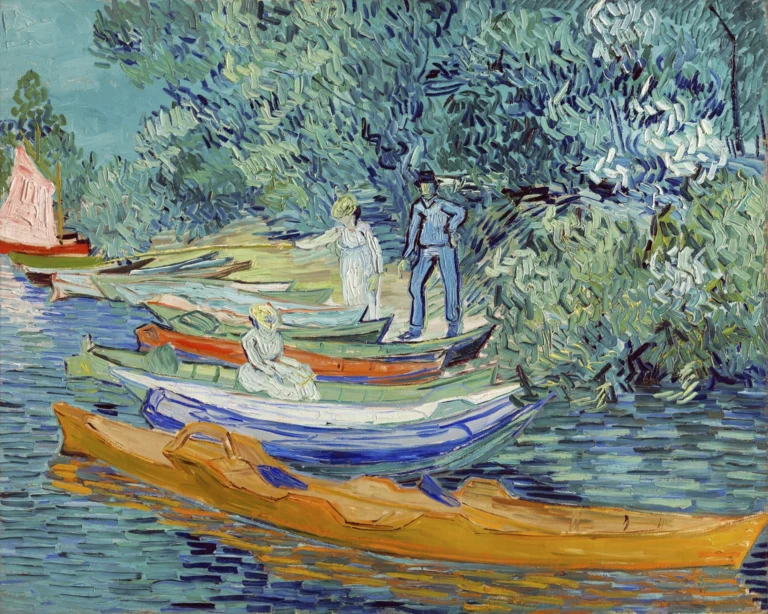Bank Of The Oise At Auvers (1890)
Created in 1890, Bank of the Oise at Auvers is a remarkable oil on canvas painting by Vincent van Gogh that showcases a serene view of the Oise River in Auvers-sur-Oise. The artwork displays Van Gogh's characteristic bold brushwork and a vibrant color palette, enhancing the tranquil atmosphere of the scene. The figures present within the painting are intentionally obscured by radiant light, generating a sense of mystery and depth. Currently housed in the Detroit Institute of Arts, this piece is a significant element of Van Gogh's later works, embodying his emotional and artistic struggles as he approached the end of his life.
Year 1890
About the Artwork
Did You Know
Liked what you see? Add it to your collection.
Enjoyed reading? Share it.
... continued
Key Details
- Artist: Vincent van Gogh
- Year: 1890
- Medium: Oil on canvas
- Dimensions: Unframed: 28 3/4 × 35 3/4 × 1 1/4 inches (73 × 90.8 × 3.2 cm); Framed: 37 × 44 1/4 × 3 1/2 inches (94 × 112.4 × 8.9 cm)
Provenance
The painting has a well-documented ownership history. It was initially in the possession of Johanna van Gogh-Bonger, Vincent's sister-in-law, until September 1905. It then passed through several owners, including the Paul Cassirer Gallery in Berlin, Carl Reininghaus in Vienna, and Mrs. F.O. (Margaret) Oppenheim in Berlin. In 1935, it was purchased by Robert H. Tannahill, and upon his death in 1969, it was bequeathed to the Detroit Institute of Arts in 1970.
Current Location
The painting is currently part of the collection at the Detroit Institute of Arts, where it is on view in the Modern, Level 2, Central Wing.
Description
The painting depicts a serene scene of the Oise River at Auvers-sur-Oise. It features Van Gogh's characteristic bold brushwork and vibrant color palette. The figures in the painting are sketchy and their features are obscured by a brilliant shaft of light, which is a notable aspect of the composition.
Public Domain
The painting itself is in the public domain, allowing for its reproduction and use without copyright restrictions.










